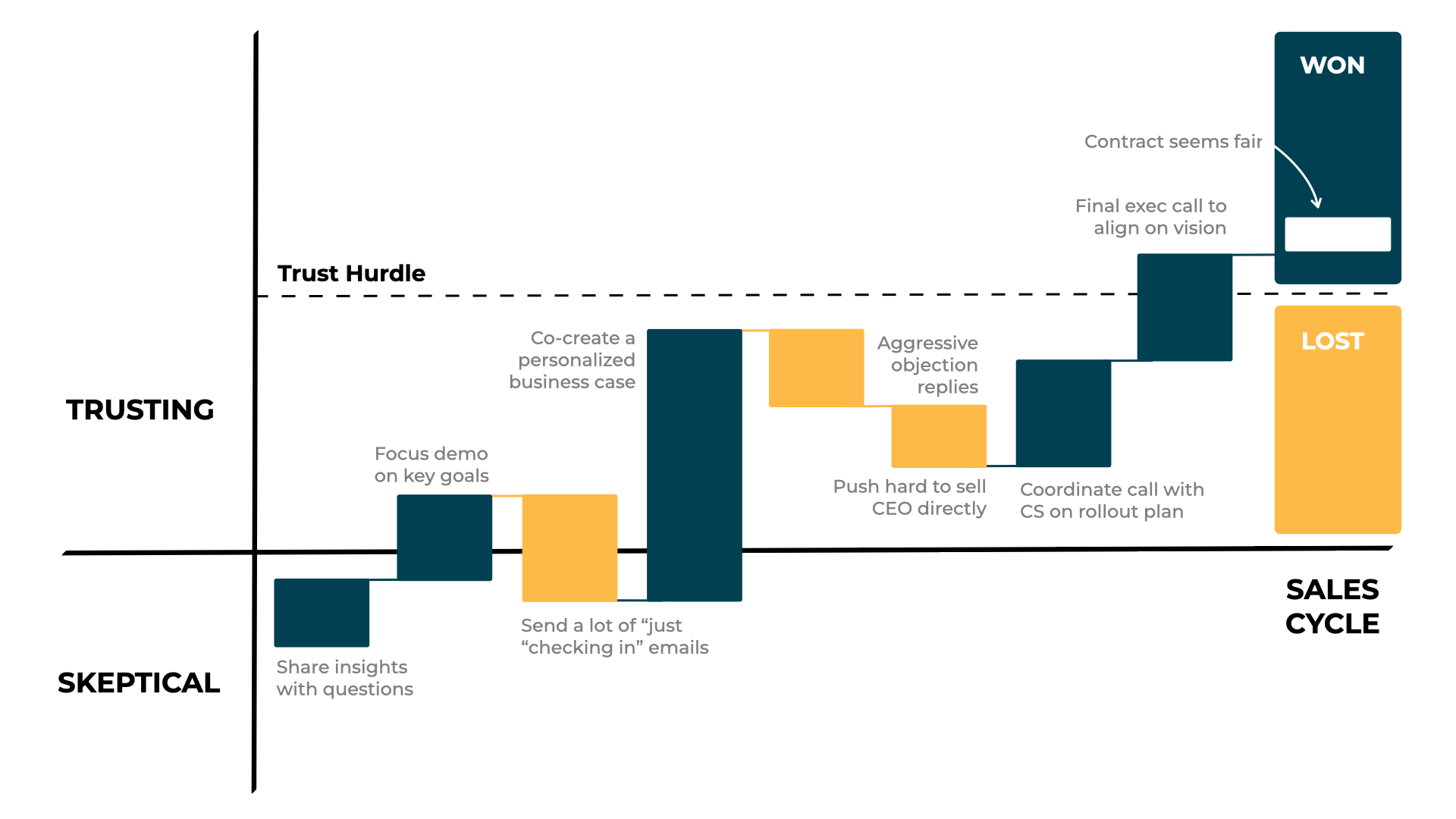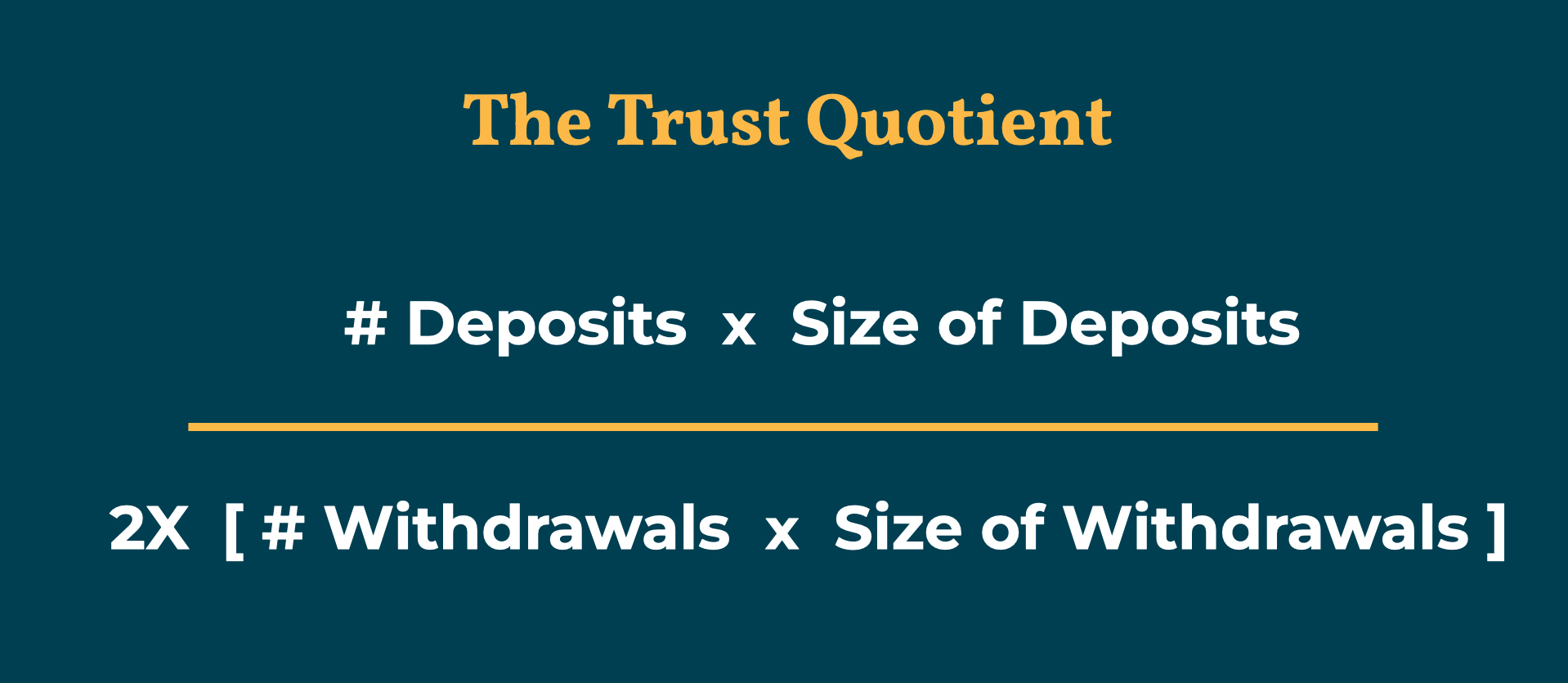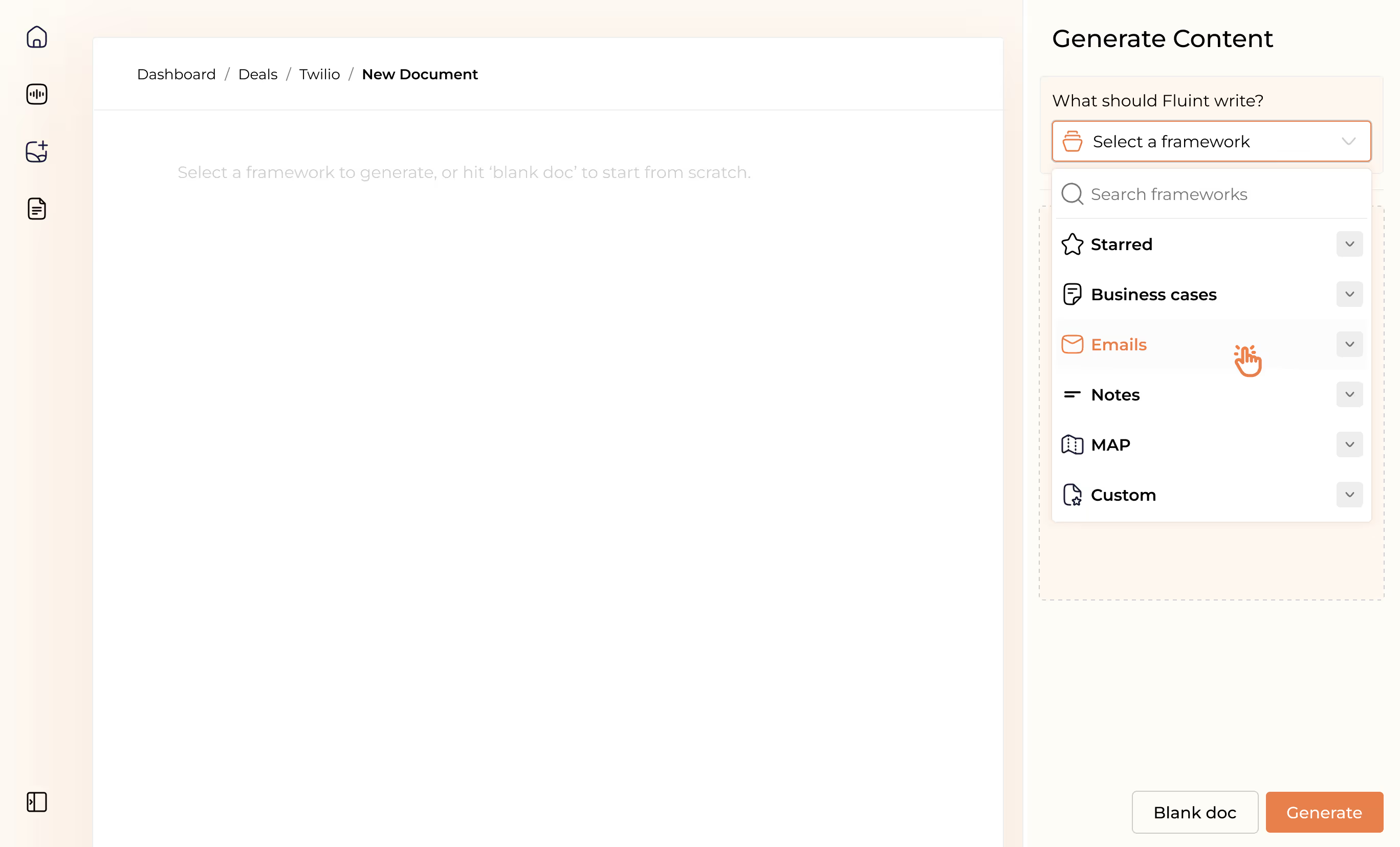The Hidden Pipeline Metric: How to Measure & Build Trust In the Sales Process


Creating and keeping trust is a must in sales. Obviously.
If a buyer doesn’t trust the person they’re working with — regardless of their trust in the product — they won’t move forward.
But trust is one of those subjective, “squishy” topics.
And most conversations about trust-based selling are too abstract to be helpful. How, exactly, do you create trust in sales? Can you measure it? How much do you really need to build?
This post answers these questions with a simple mental model you can apply to every deal.
It’s built from two hidden metrics that hold the power to close or kill deals:
- The Trust Hurdle
- The Trust Quotient
Here’s a quick visual example of a sales rep both enabling and erasing trust (Y-axis) throughout their sales cycle (X-axis).
Study this for a second, then let’s dig in.

Clear the "Trust Hurdle" Before Closing
The Trust Hurdle is a benchmark set by each buying team. It specifies how much trust needs to be built before they’ll commit to you(r product).
If you push for a buying decision before you’ve cleared this hurdle, your deal will either wind up Closed Lost, or, you’ll erase a portion of the trust you had built. Which only makes it harder to clear the Hurdle.
A variety of factors affect how high the Trust Hurdle is set, including:
- Size of the investment.
- Perceived level of project risk.
- Past experiences with similar vendors.
- Personal accountability for project success.
- Level of internal alignment on the investment.
For example, let’s say you’re selling customer experience (CX) software. The deal involves:
- $1M investment with 100 hours of training time.
- Brand-new approach to improving CX for high-value clients.
- Past CX vendors who didn’t fix a botched, customer-facing rollout.
- Direct impact to the VP of Customer Success’ reputation and career.
- A CRO who doesn’t fully agree with the new approach.
The Trust Hurdle for this purchase will be quite high. Let’s say it’s set at a “9” on a proverbial 10-point scale. Compare this to a deal where the Hurdle may only be set at a 2 or 3:
- $10K investment with 5 hours of training time.
- Well-proven approach to managing CX for regular client base.
- CX vendor comes with a solid reputation and trustworthy referrals.
- The approach is fully supported by everyone.
From this example, you’ll find that two things are true:
- The higher the Hurdle, the more complex the sale.
- Trust Hurdles are set higher in enterprise environments.
To figure out how high a specific deal’s Hurdle is compared to others in your pipeline, try asking:
How significant is this investment, compared to others your team will make this year?
How “risky” does your team feel this decision is, on a 10 point scale?
Have you tried anything like this in the past? What was that experience like?
What does the outcome of this project mean for you, personally?
How do others feel about this? Anyone have a different perspective from yours?
Manage Your "Trust Quotient" Throughout The Sales Cycle
The Trust Quotient is how you can diagnose the amount of trust you’ve built during the sales cycle.
It combines all the interactions you’ve had with your buyer into a single score. That score is important because it tells you where, in relation to the Trust Hurdle, you fall:
- If your Trust Quotient > your buyer’s Trust Hurdle, the deal is in a closing position.
- If your Trust Quotient < your buyer’s Trust Hurdle, the deal is not ready to close.
For better or worse, your interactions are open to interpretation. People interpret motive, intention, and emotion from their experiences. This can either help, or hinder, the trust you’re building. Interpretations are rarely neutral. Instead, they fall into one of two categories:
- Deposits. Positive interactions that increase a buyer’s level of trust.
- Withdrawals. Negative interactions that reduce the level of trust.
These two categories are combined in the Trust Quotient, measured as:

Note, there are two other factors the Trust Quotient accounts for:
- Intensity.
Each deposit or withdrawal is adjusted based on how “small” or “large” it is. A few, intensely-positive experiences can build more trust than a greater number of “alright” interactions.
For example, going out of your way to open up a free testing environment for a highly-technical buyer makes for a larger deposit than sending over a pre-recorded video demo.
- Doubled Denominator.
Negative experiences are sticky. We hold onto them longer, and they’re stronger influences on our beliefs and decisions. There are all kinds of studies citing how many positive experiences are needed to offset a negative experience. For simplicity, we double the denominator here.
This means that a withdrawal will erase trust twice as fast as a deposit will build it back up. In short, it’s easier to lose trust than create it.
Five Practices for Trust-Based Selling
Now that you've got the framework in place, here are some specific practices to try out.
1. Divide up your deal history into two columns.
Pick a handful of key accounts in your pipeline and scan their deal history in your CRM. Make a mental note of whether each call, meeting, or email was a deposit or a withdrawal.
Here’s a shortlist of examples comparing deposits to withdrawals:

Some of the items in this list make for "outsized" deposits as compared to others, too.
For example, co-creating a business case enables a whole series of deposits as part of the process:
- Problem statements that makes buyers feel, "OMG, finally someone who gets it."
- Confidence sharing a sharp, concise message with their execs.
- Building a sense of ownership with the IKEA effect.
Take it from Cobi. She talks about exactly this at the 1 minute mark in this short conversation.
Listen to how she describes the way most executives approach sales conversations, thinking:
“I’ve been hired to do a job and I’m good at it, so I don’t need you telling me…”
By the way, if you want to use the exact same process as Cobi, go here.
2. Work with deal champions to engage skeptics.
Internal champions have a major advantage over sales reps. They start conversations as a colleague, with a bank of trust that’s already been built.
This gives them the benefit of the doubt when asking questions, or disarming objections.
For example, a question like, “Don’t you think we should get <Decision Maker> involved?” may be interpreted as “controlling” when shared by a sales rep, but “thoughtful” coming from a champion.
3. State your intentions and request permission.
Instead of leaving your motives open to interpretation, make them explicit.
Use phrases like, “The reason I ask...” and, “I’m asking this because...” to signal positive intention. This is key when challenging prospects, making a controversial statement, or asking an intimate question.
Requesting permission is a helpful practice when you want to ensure an emotionally-charged moment is viewed positively. Try a phrase like:
“I’m a little nervous to ask this, but I think it will help us. Would you mind if I ask, and you can decide if you’re comfortable discussing?”
4. Determine if you’re starting from trust or skepticism.
Customer referrals, review sites, brand reputation and marketing content are all ways buyers form an impression of your company (and therefore, the people who work there) before meeting you.
This can either set you back, or give you a significant boost, during your first interactions. Try to discern where your buyer is coming from by asking a question like:
“For my context before we get rolling, I’m curious what your impression of < Company > is?”
5. The larger the swing in score, the larger the promoter (or detractor).
The strongest skeptics, when won over, make for the most vocal advocates.
That’s because climbing from a proverbial score of “-5” to “+5” on the Y-axis above is an emotionally-intense experience. A strong upswing is something customers will want to share about.
The opposite is true, too. Gross missteps or mishandling the trust you’ve built are great ways to create detractors — people who can’t wait to speak poorly of their experience.
While the Trust Equation isn’t a specific science, this mental model should help you understand if your deals are moving into a closing position — so you can take action accordingly.
FAQ's on:
Why stop now?
You’re on a roll. Keep reading related write-up’s:
Draft with one click, go from DIY, to done-with-you AI
Get an executive-ready business case in seconds, built with your buyer's words and our AI.

Meet the sellers simplifying complex deals
Loved by top performers from 500+ companies with over $250M in closed-won revenue, across 19,900 deals managed with Fluint

Now getting more call transcripts into the tool so I can do more of that 1-click goodness.



The buying team literally skipped entire steps in the decision process after seeing our champion lay out the value for them.


Which is what Fluint lets me do: enable my champions, by making it easy for them to sell what matters to them and impacts their role.







.png)
